Kamiros was one of the three major Doric cities on Rhodes, united with Ialyssos and Lindos in the 5th century BC to form the powerful city-state of Rhodes. While founded by the Dorians, evidence from a Mycenaean necropolis near Kalavarda suggests the first inhabitants were Achaeans. Kamiros was primarily an agricultural society, producing oil, wine, and figs. In the 6th century, it became the first Rhodian city to mint its own coins. Kamiros controlled the western and central parts of the island. Known for its fertile clay soil, it was more conservative than its sister cities, focusing on agricultural development. Homer's reference to its white soil, "arginoinonta," highlights this aspect.
The earliest known traces of habitation in the wider area of Kamiros, Kamira, date back to Mycenaean times and come from a cemetery of thalamoid graves in the village of Kalavarda, a few kilometres north-east of Kamiros (Late Bronze Age I, II, IIIA2-IIIC1=1370-1070 BC).
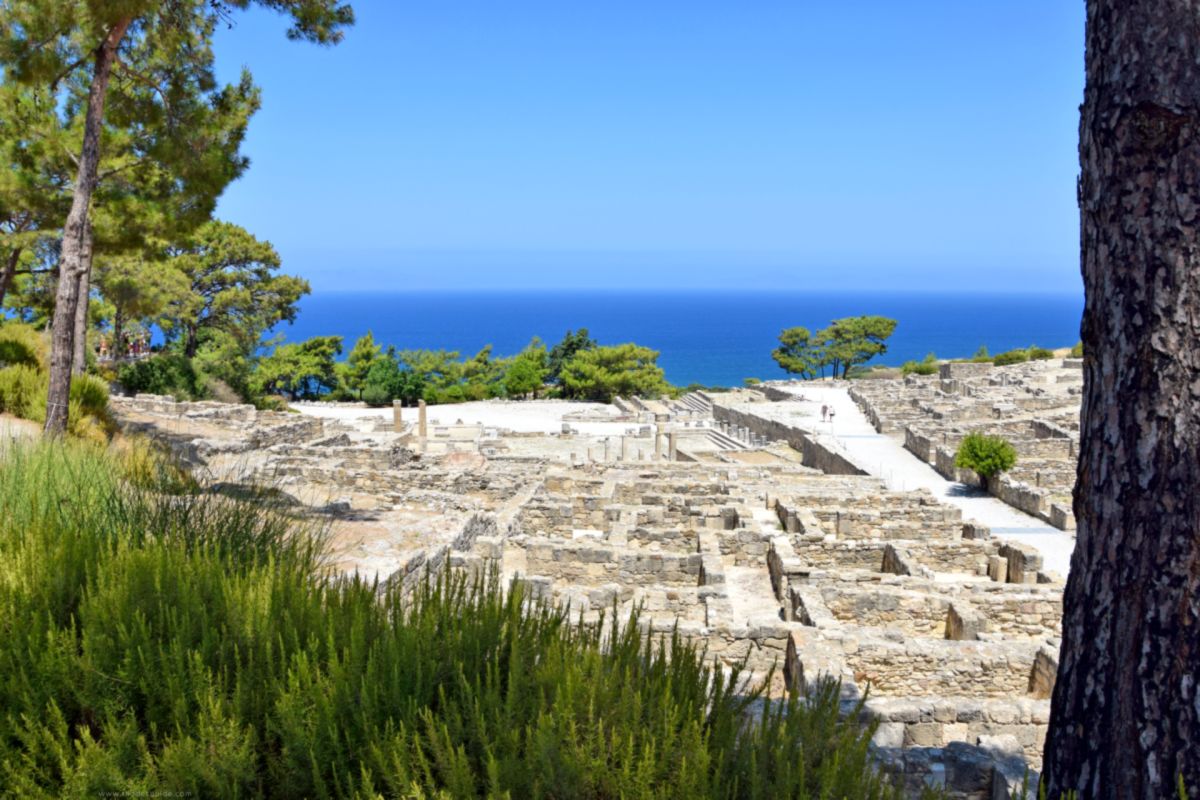
Archaeological evidence of habitation in the area appears again from the Late Early Geometric period (900-850 BC) in the cemetery at Patelles, northeast of the city of Kamiros, while pottery of the same period has been found in the deposit of the sanctuary of Athena in the acropolis.
During the Geometric period (850-680 BC), cemeteries appear in two more locations around the archaeological site, at Papa's Loures, south of and near the acropolis, and at Kehraki. Numerous finds also come from the deposit of the temple of Athena, attesting to the existence of a settlement and sanctuary as early as this period.
The Archaic period (680-480 BC) was a period of prosperity for Kamiros, as for the other city-states of the island. New cemeteries appeared, the most important of which, both in this period and in the Classical period, were the Fikelloura and the Long Langoni. Fikelloura lent its name to a characteristic category of Hellenistic pottery, while in Makry Langoni one of the most important works of Rhodian pottery of the Hellenistic period, the column of Kritous and Timaristas, was found.
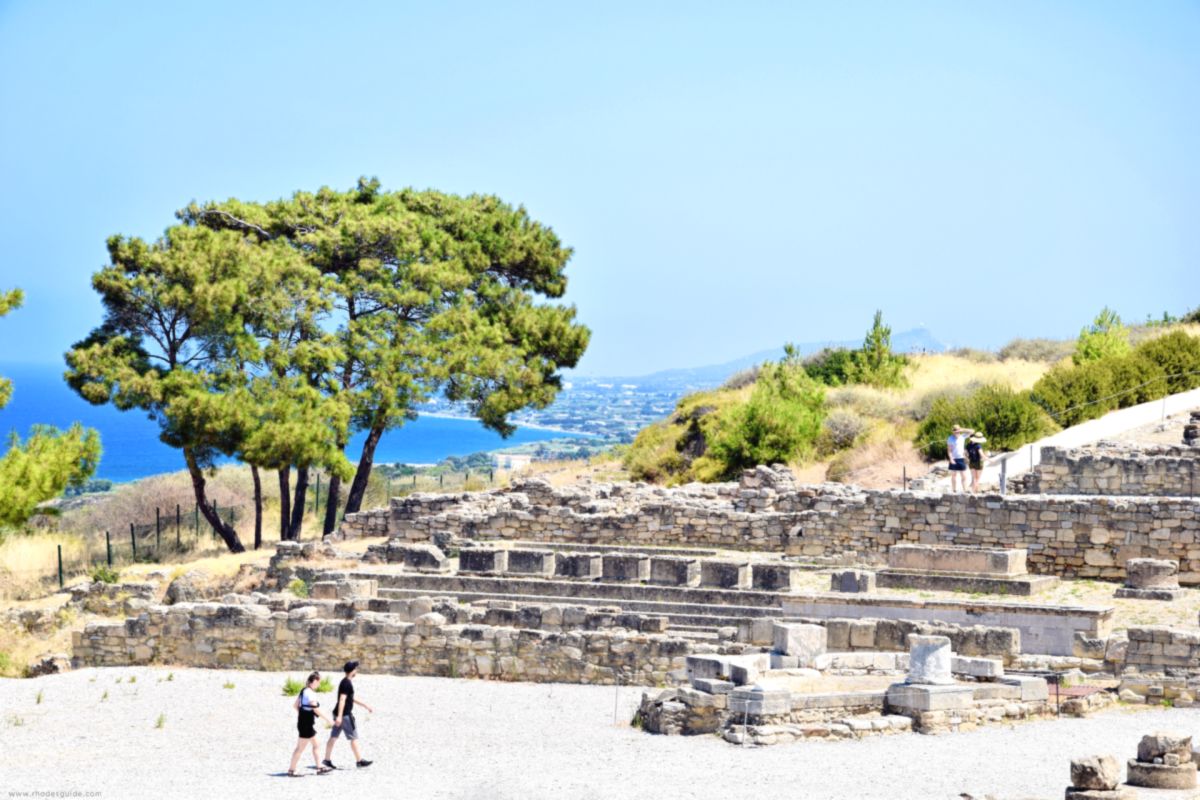
The finds from the cemeteries and from the deposit of Athena testify to the lively trade relations of Kamiros with mainland Greece, Asia Minor and the South-Eastern Mediterranean, while, apart from agricultural production, craft activity (ivory, goldsmithing, faience, metalworking, etc.) must have flourished. In the 6th century BC Kamiros, like the two other city-states, minted its own coinage with the fig leaf, one of its agricultural products, as a symbol.
During the Archaic period (after the middle of the 6th century BC), the first temple of Athena must have been built on the acropolis and, at the same time, a large cistern and the so-called Temple A, a short distance north of the archaeological site. Only the façade of a Late Classical fountain and some walls in the market area are preserved from the classical city.
In classical times, Kamiros, like the two other city-states of the island, was part of the First Athenian League. In 412 BC, during the Peloponnesian War (431-404 BC), Ialusius Dorieus, son of the famous Olympian Diagoras, landed on its shores with the Spartan fleet and persuaded the Rhodians to unite into a single state. The new capital of the Rhodian state, the city of Rhodes, which was founded in 411 B.C., with inhabitants from all three old city-states, would henceforth be the centre of political, economic and cultural life.
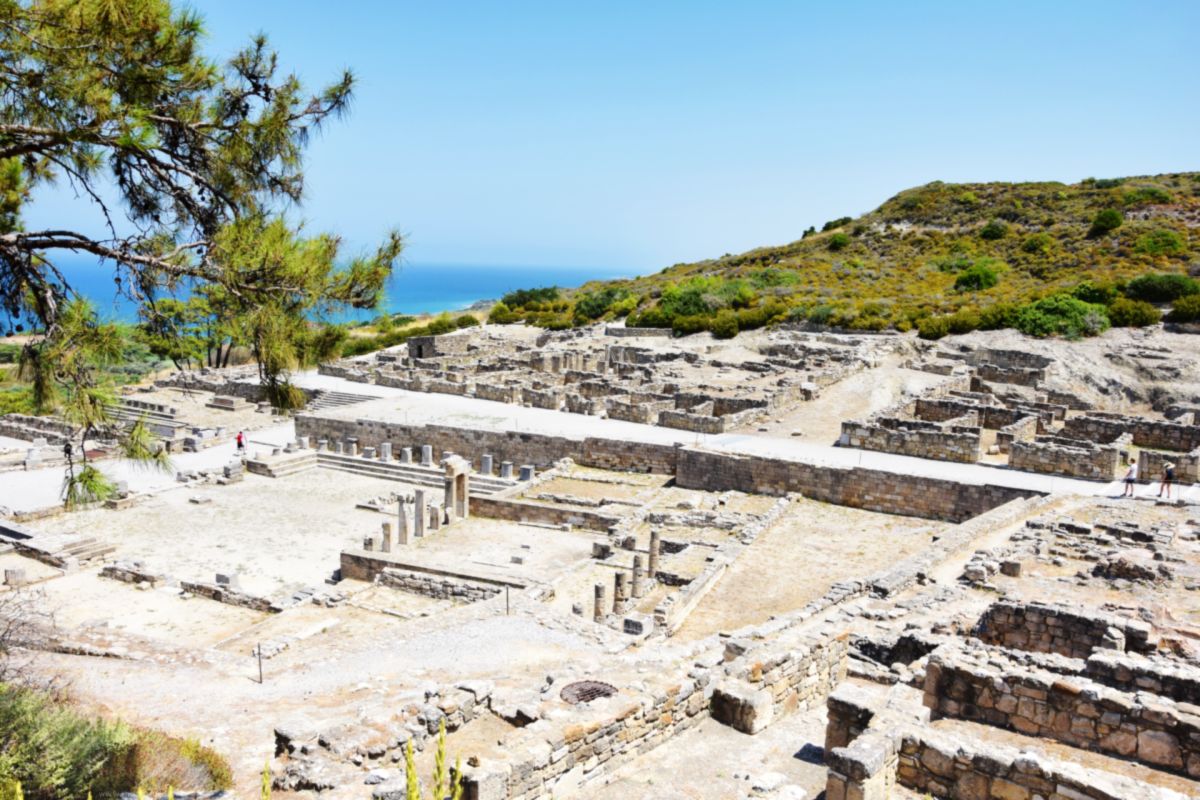
The old cities, however, did not cease to be inhabited, as the example of Kamiros showed, which was rebuilt on a large scale after the great earthquake of 227/6 BC. Repairs, mainly to the market and houses, were also carried out after the second earthquake around the middle of the 2nd century AD, while the newest building remains date back to late antiquity. The ruins of the Hellenistic/Roman city of Kamiros are preserved in the archaeological site. They came to light during excavations in the 19th century and mainly during the period of Italian rule (1912-1943).
Camiros has often been compared to Pompeii, which is not correct, as Camiros did not fall into decline due to natural disasters. Its decline, like the decline of Ialyssos, was the result of gradual abandonment by its inhabitants, who decided to move to the city of Rhodes, which, as mentioned above, was founded in 408 BC.
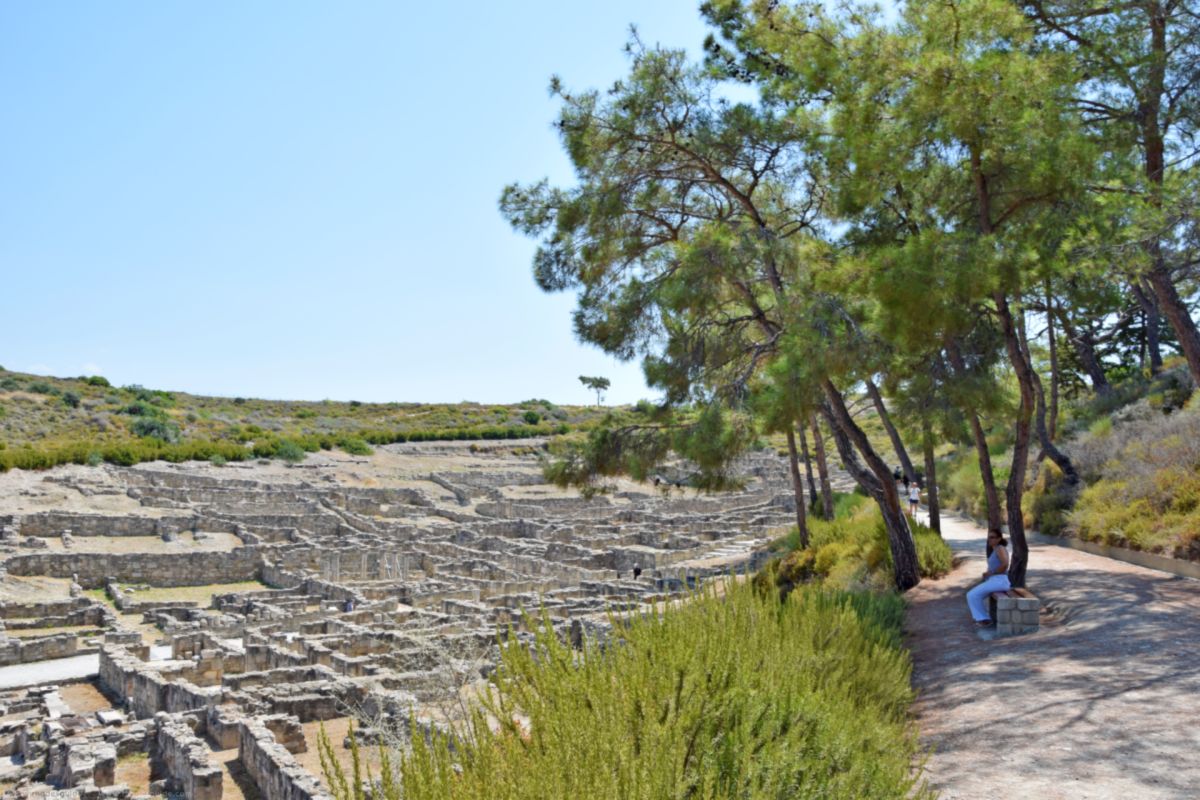
The sanctuary of Athena
The sanctuary of Athena existed on the acropolis of Kamiros (Kameiros) from the ninth century BC. All that has survived of the earliest phase are the deposits, in which the numerous votive offerings were deposited, probably during a rebuilding phase during the sixth century BC. It was perhaps at this time that the first temple of Athena was built. The deposits consisted of a rectangular pit of great depth, as well as small cavities in the rock in the where the Hellenistic temple was later built.
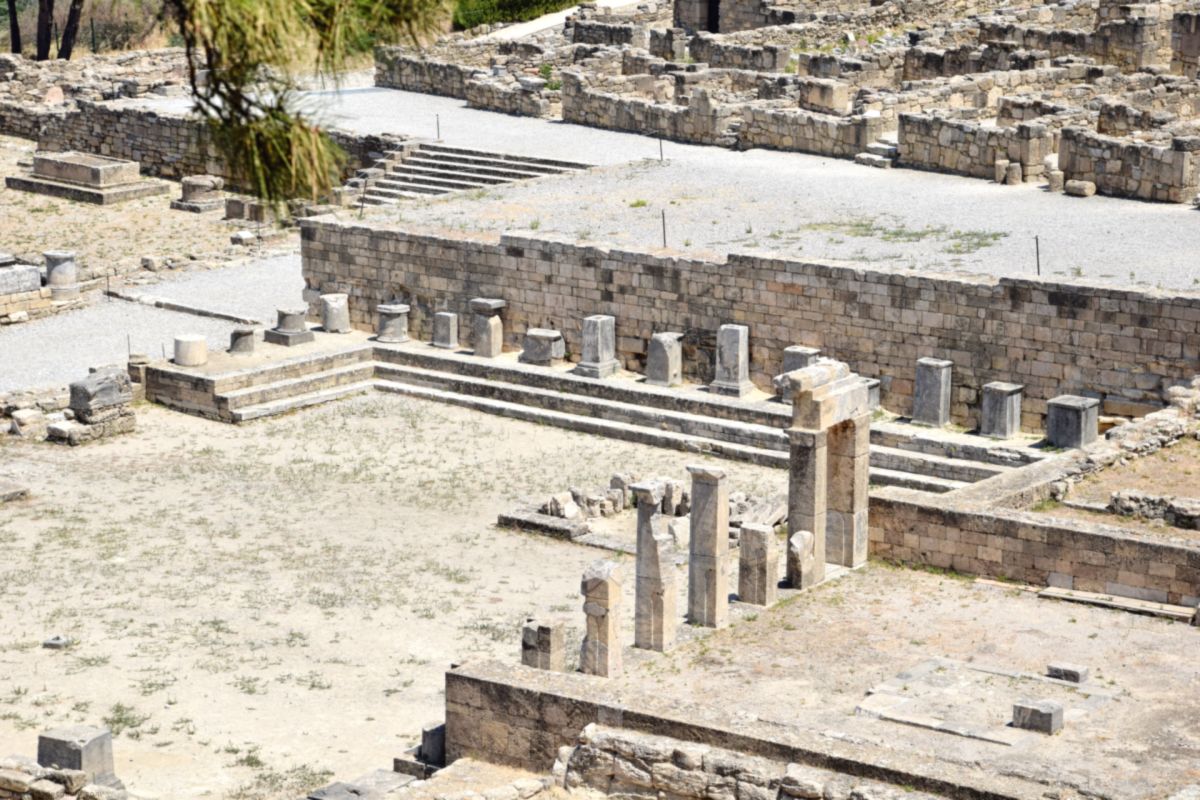
Large-scale building works were carried out in the sanctuary during Hellenistic times, perhaps after the earthquake of 227 BC. Its architectural planning was based on the terraced arrangement which was popular in the Hellenistic period and is also encountered in the sanctuary of Lindos.
On the lowest terrace at the end of the main street, stood a small altar, from which ramps led to the ends of the second trace, where a stoa in the Doric order with a wide esplanade front of it was located. The stoa was 204 m. long and was one of the largest in the ancient world.
At its rear a row of rooms served the needs of the sanctuary. In the middle of the stoa the rooms were interrupted by a staircase leading up to the highest terrace, on which stood the temple of Athena in the inner sacred precinct or temenos.
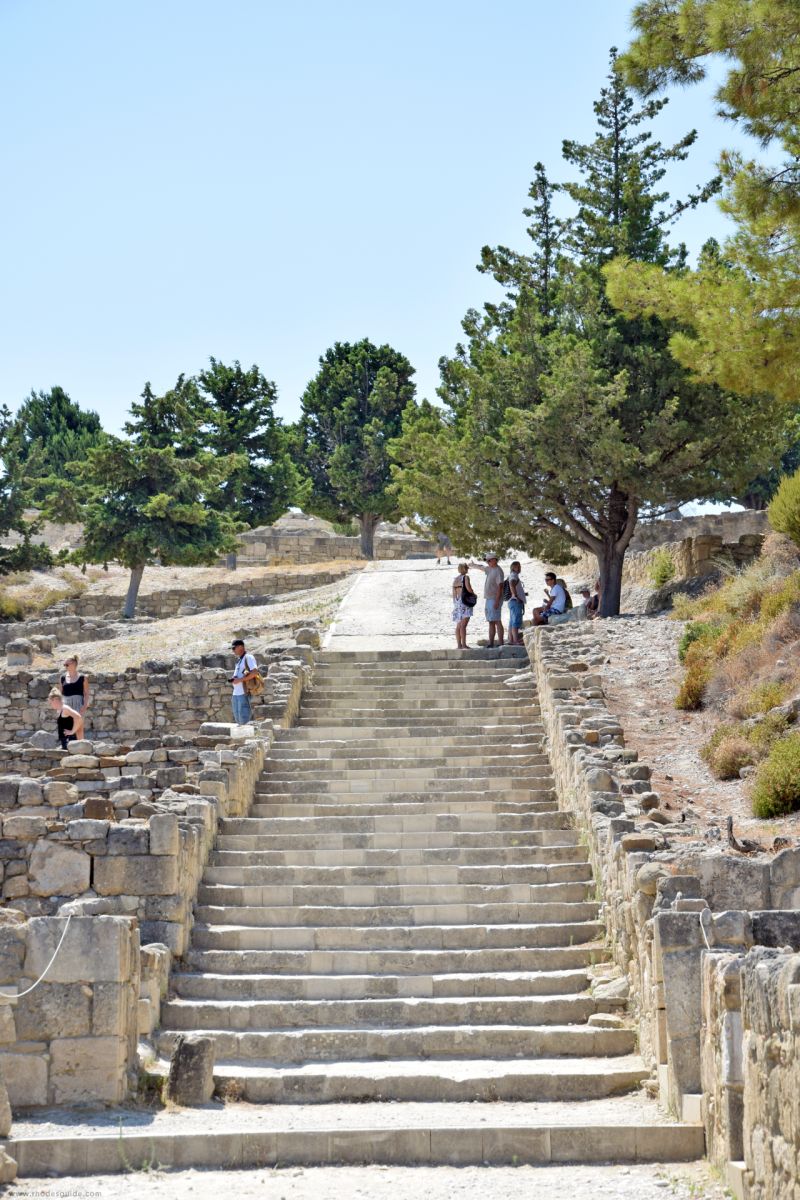
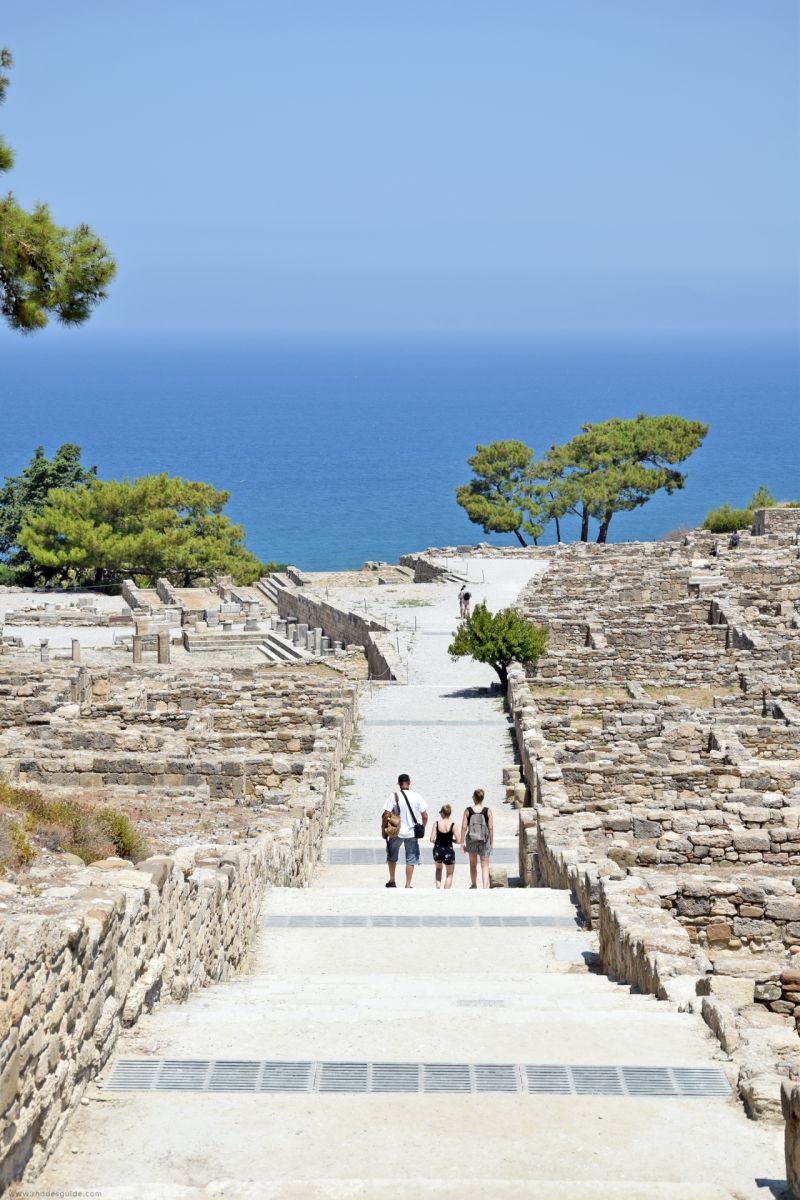


 English
English
 Deutsch
Deutsch
 Ελληνικά
Ελληνικά